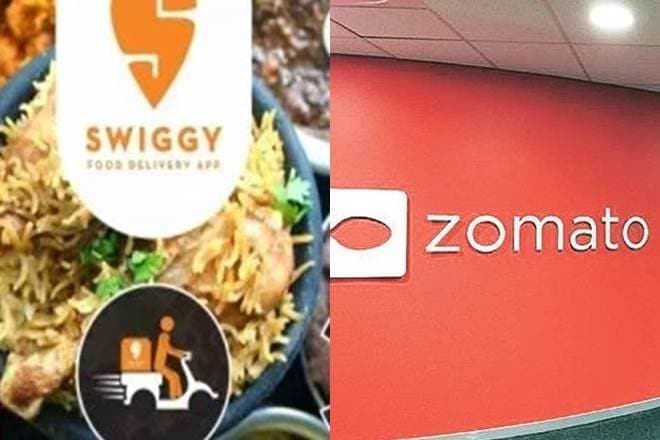Millennials may be swiggying more every time hunger pangs strike them. According to data sourced from market research firm Kalagato, Swiggy delivered 45-49 million orders during December 2019 while rival Zomato trailed with 32-36 million orders.
Swiggy and Zomato that have considerable financial muscle are locked in a fierce competition for a bigger pie of the online food delivery market. Losses for Swiggy jumped to over Rs 2,000 crore in the year to March 2019 from Rs 385 crore in FY18, whereas Zomato’s losses increased to Rs 570.52 crore in FY19 from about Rs 79 crore in FY18.
In January, Zomato acquired UberEats India, a deal that is expected to strengthen its hold in the southern markets. Zomato delivers in over 500 cities whereas Swiggy has expanded operations in more than 450 cities.
Ankur Pahwa, partner at EY, says Swiggy has a strong presence in southern markets where adoption is faster and transactions are comparatively higher, giving it an edge over Zomato. Also, unlike Zomato that started as a restaurant listing business, Swiggy has always been focused on food delivery. “The company (Swiggy) has always focused on food delivery and has been effective with on-ground execution,” Pahwa says. However, post Zomato’s acquisition of UberEats, Zomato is expected to have narrowed the gap with Swiggy in terms of order delivery, analysts say.

The competition between the two players will become even, Pahwa says.
While the average order value (AOV) on Swiggy ranged anywhere between Rs 243- Rs 300 during October-December 2019, AOV on Zomato stood between Rs 252-Rs 278 during the period, data from Kalagato shows.
What further gives Swiggy an advantage over Zomato is the fact that it operates only in India and is a delivery-first company, thereby allowing the firm to streamline its operations and concentrate on a single market while Zomato’s operations are split across restaurant discovery, dine-out programmes and food delivery in as many as 24 countries, says an industry observer who does not wish to be identified.
According to the Google-BCG report, reach of food-tech apps has grown six times from 2017 to 2019 — this perhaps explains the surge in investor funding in the sector. In the five years ending 2019, the fund tally of the online food delivery segment totalled nearly $2 billion. Last month, Swiggy raised $113 million led by existing backer Naspers, taking its total fundraise to $1.61 billion. In January, Info Edge, an investor in Zomato, informed exchanges that the food delivery firm will raise a fresh $150 million from Antfin Singapore Holding.
Online spending in the country is estimated to go up to $130-$150 billion by 2025 from an expected $40-$50 billion in 2020, the Google-BCG report shows.
The food-tech industry is expected to touch $7.5-$8 billion by 2022 from an estimated $3.5-$4 billion in 2019, the report says.

